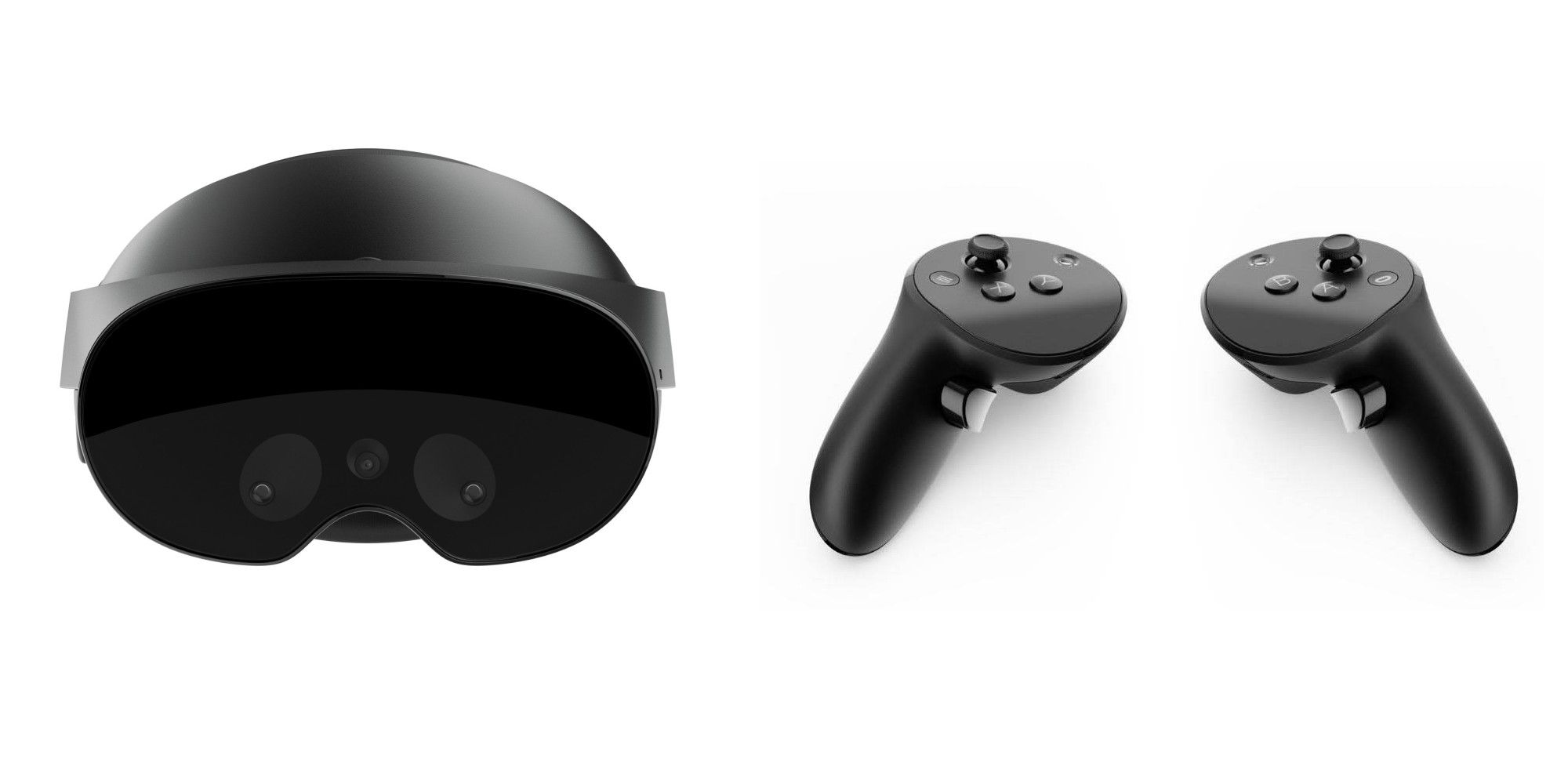After more than a year of anticipation, Meta's new virtual reality headset is here, and as rumored, it is called the Meta Quest Pro. While most people are familiar with VR and augmented reality headsets for consumers, there are more than a handful designed for professionals. Last month, Lenovo announced the ThinkReality VRX headset with high-end specs and enterprise-grade security features. However, it won't be available until later this year, with a wider roll-out planned for 2023.
Lenovo also announced the Legion VR700 VR headset, which is more of a Meta Quest 2 rival but exclusive to China. The headset has a Snapdragon XR2 processor, 8GB of RAM and 256GB of storage. Priced at ¥2999 (~$440), it costs more than the Quest 2, which got a $100 price bump and now starts at $399.
The Meta Quest Pro is the company's most expensive VR headset yet and is described as "the first in a new line of advanced headsets" designed to push the boundaries of virtual and mixed reality. Unlike the Quest and Quest 2, the Quest Pro is targeted at professionals and with productivity in mind. So while it can perform all the functions of its predecessors, it is made for work. Meta announced the headset at the Connect 2022 event, and Satya Nadella, the CEO of Microsoft, also joined in to reveal details of a new partnership between both companies. Microsoft will announce further work and productivity tools, including Microsoft 365 and Microsoft Teams apps designed for both the Meta Quest Pro and the Meta Quest 2. It will also add the ability for users to join Teams meetings from inside the Meta Horizon Workrooms.
Upgrades, Inside And Out
Regarding specifications, the Meta Quest Pro uses pancake optics like the PICO 4, an upgrade over the Fresnel lenses inside the Meta Quest 2. The advantages of this new lens type are that the headset's size is reduced, and the visuals are sharper. In addition, the headset has two LCD panels that use custom local dimming and quantum dot technology to improve image quality. Meta also claims the headset has 37 percent more pixels per inch and 10 percent greater pixels per degree than the Meta Quest 2. There is also a new eye relief dial that allows users to fine-tune face tracking, improve the viewing experience, and optimize fit.
Powering the Quest Pro is Qualcomm's new Snapdragon XR2+ processor paired with 12GB of RAM and 256GB of storage. There are also new sensors that capture four times more pixels than those of the Quest 2's external cameras. In addition, the Quest Pro supports full-color Passthrough for a better mixed-reality experience. For comparison, Quest 2 only shows the outside world in black and white. The headset also sports new and advanced controllers with built-in sensors (three per controller) that allow their positions to be tracked in 3D space independent of the headset. This provides users with a full 360-degree range of motion. The exciting part is that these controllers are also compatible with the Meta Quest 2 and thus will be available as a standalone purchase.
The Meta Quest Pro is priced at a whopping $1,499.99 and is already available for pre-order in all countries where Meta Quest products are supported. They are also available at Amazon and Best Buy in Canada, France, the U.K., and the U.S.; Argos and Currys in the U.K., and FNAC in Boulanger and France. Open availability is scheduled for Oct. 25. Inside the box, users will find the headset, a pair of controllers, stylus tips, light blockers, a charging dock and a 45W USB-C charger that users can also use to charge the controllers. Later this year, the Touch Pro controllers will be available for $299 for those who want to pick them up to use with the Meta Quest 2.


